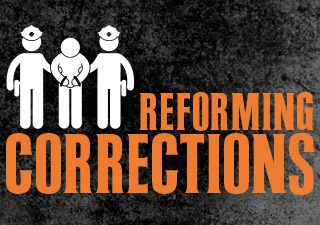Commentary

Pennsylvania Passes Proven Prison Reform
Guest Commentary by Sen. Stewart J. Greenleaf
Pennsylvania’s inmate population and rate of recidivism have reached crisis levels in recent years. Since 1980, Pennsylvania’s inmate population increased over 500% between 1980 and 2009. The increase in the number of inmates was due to nearly half of released inmates returning to prison for mostly non-violent drug related offenses. Many inmates are leaving prison more likely to commit new crimes as they struggle with addiction, alienation from family and friends, and poor employment prospects. Our past corrections policies, based on increasingly harsh and punitive measures have created a deadly cycle of incarceration that drains government resources and dissolves the social and economic well-being of entire communities. We came to the realization that prison was often exacerbating the very problems that it was intended to solve. Nearly 90 percent of inmates will ultimately return to their communities, and it is imperative that they are prepared for re-entry.
The passage of SB 100 marks one of the most significant accomplishments to date for prison reform efforts in Pennsylvania. Now awaiting the Governor’s signature, the bill initiates smarter sentencing and parole practices, increases access to the state’s alternative sentencing programs, creates alternatives to prison for probation and technical parole violators, and establishes a comprehensive program to reduce recidivism and ensure the successful reentry and reintegration of offenders into the community.
SB 100 is a leap forward, putting into practice a new wave of thinking based on science and evidence based programs designed to successfully rehabilitate and reintegrate non-violent offenders into the community with a real chance to live crime-free. I believe this is the starting point for safer, healthier communities. Many states experiencing a prison population crisis have successfully enacted similar reforms. Even states that once endorsed the most severe punishments, such as New York and Texas, have significantly reduced both crime and imprisonment rates through the use of alternative sentencing and re-entry programs.
The legislation will generate significant and lasting cost savings, estimated at $253 million within five years. This comes at a critical moment with state finances increasingly strained. Corrections spending now exceeds spending for higher education.
I would like to thank Governor Corbett, my colleagues in the Legislature, the Pennsylvania Department of Corrections, and the many organizations and advocates throughout the state and nation who have helped make prison reform a top priority in Pennsylvania. Special recognition goes to the Justice Reinvestment Initiative, a working group of national reform experts and state stakeholders whose recommendations are included in SB 100. They have raised broad bipartisan support for reform. Their additional recommendations on how to invest a portion of the savings back into the corrections system are included in a separate piece of legislation, HB 135. I am hopeful that this legislation soon sees its way to the Governor’s desk.
With the passage of SB 100, the Legislature has set a new course for corrections in Pennsylvania with lower rates of crime and recidivism, safer streets, and cost savings.
# # #
Senator Stewart J. Greenleaf represents the 12th District covering parts of Bucks and Montgomery counties.